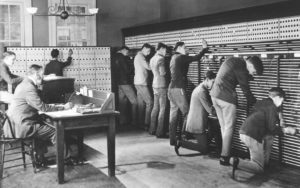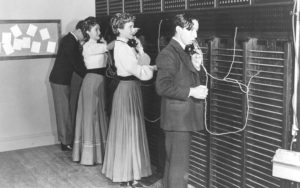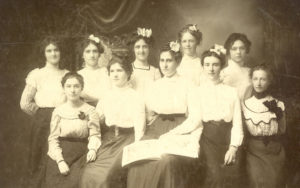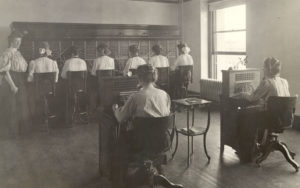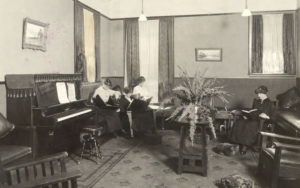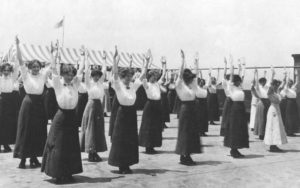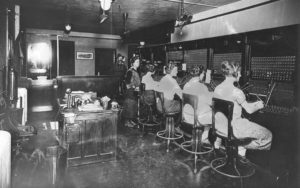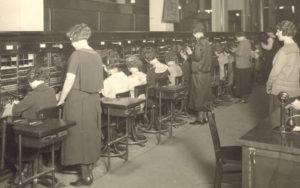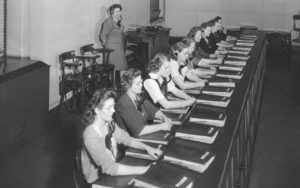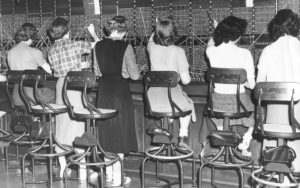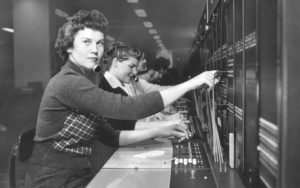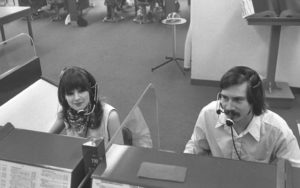The Telecommunications History Group, Inc. – Denver, Colorado Physical Archive Collection
Operator Photographs
Telecom History Archives - Photographs - Operators
To the public, the human face of the telephone company was the operator. They were called everything from “Call Girls” to “The Voice with a Smile.” They were heroines in time of disaster, comfort to the lonely and afraid, and a polite voice to often grouchy customers. The telephone operator reflected the mores and fashions of their time, as these pictures show.
In 1946, more than 250,000 women were employed as switchboard operators for public service and businesses. To view more pictures of operators and to research this topic further, you can request access to the Telecommunications History Archives, Here.
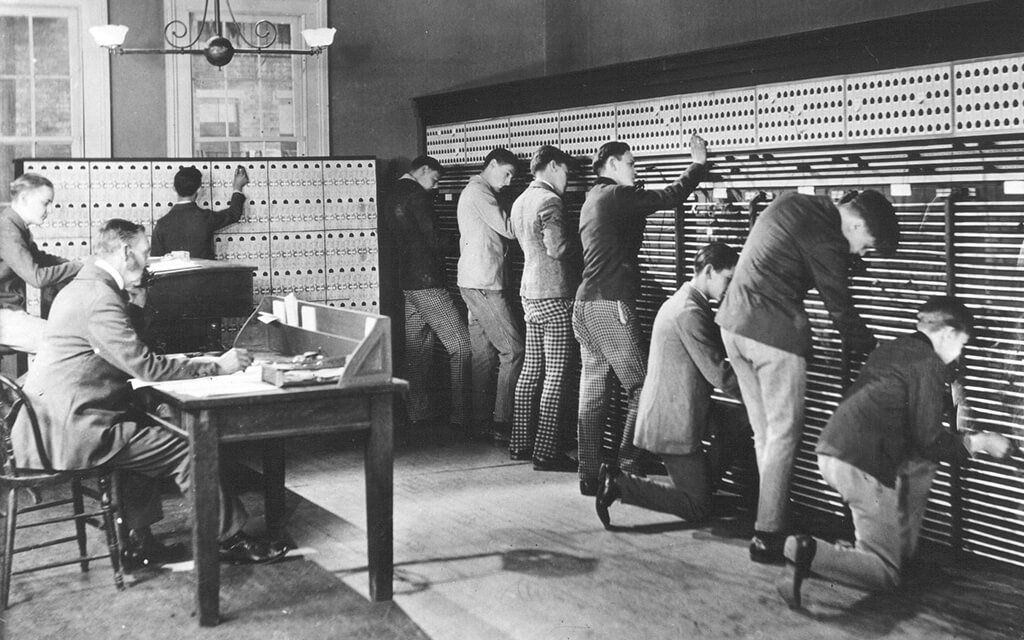 The first operators (1876-77) were teenage boys, who often engaged in horseplay and foul language. Telephone companies soon began hiring "girls" in order to present a more gentle image to customers.
The first operators (1876-77) were teenage boys, who often engaged in horseplay and foul language. Telephone companies soon began hiring "girls" in order to present a more gentle image to customers.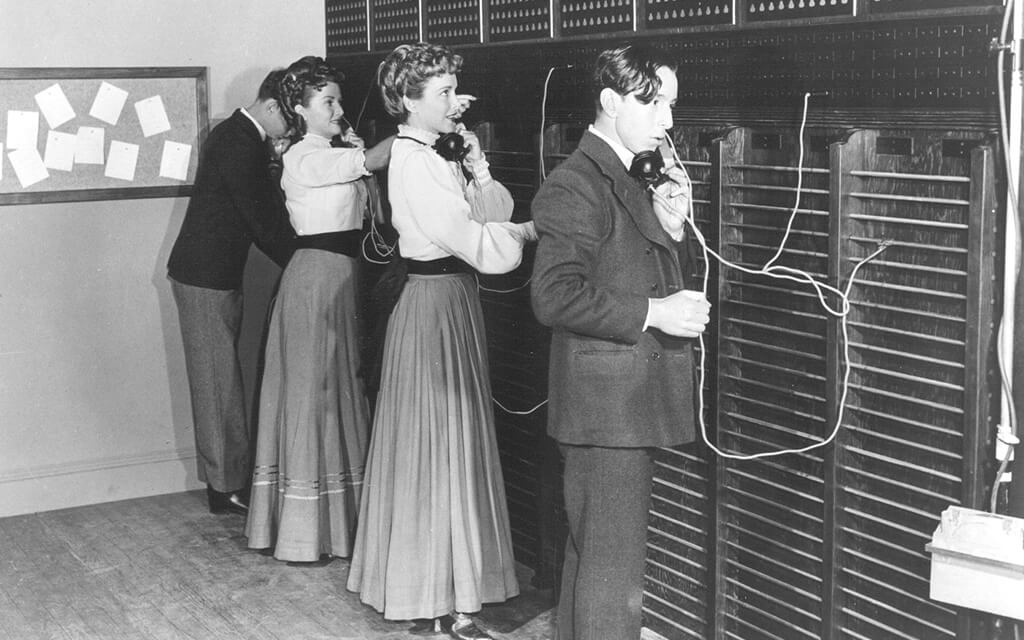 In 1878, the first women operators, Emma and Stella Nutt, worked alongside boy operators in Boston. [photo from “Bold Experiment–the Telephone Story," 1958]
In 1878, the first women operators, Emma and Stella Nutt, worked alongside boy operators in Boston. [photo from “Bold Experiment–the Telephone Story," 1958]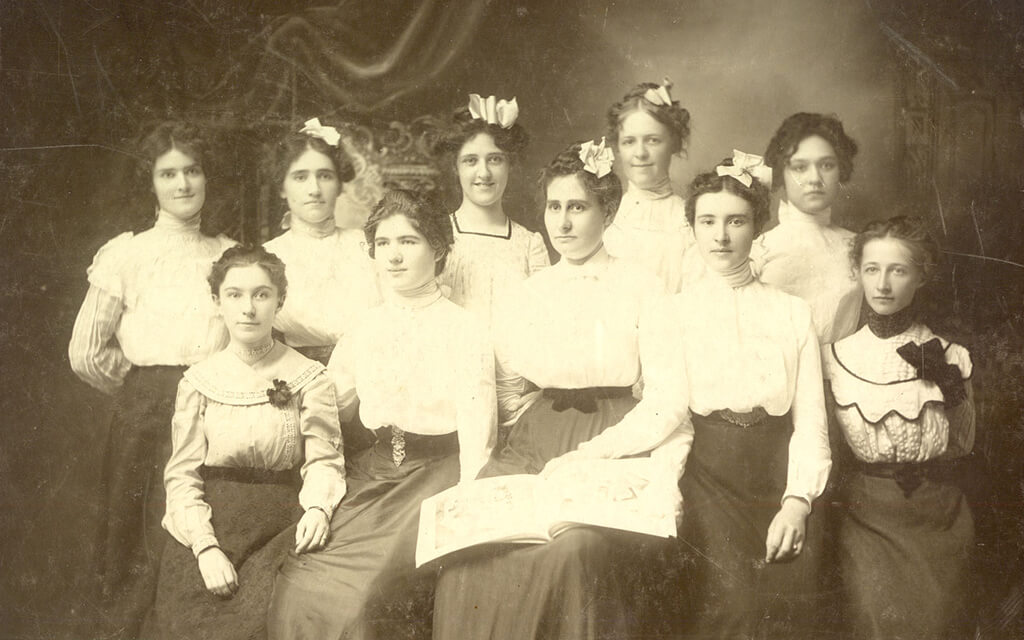 In order to convince families to allow their daughters to go to work, telephone companies stood in loco parentis. This chief toll operator exhibits a maternal attitude toward her “girls.” c. 1900
In order to convince families to allow their daughters to go to work, telephone companies stood in loco parentis. This chief toll operator exhibits a maternal attitude toward her “girls.” c. 1900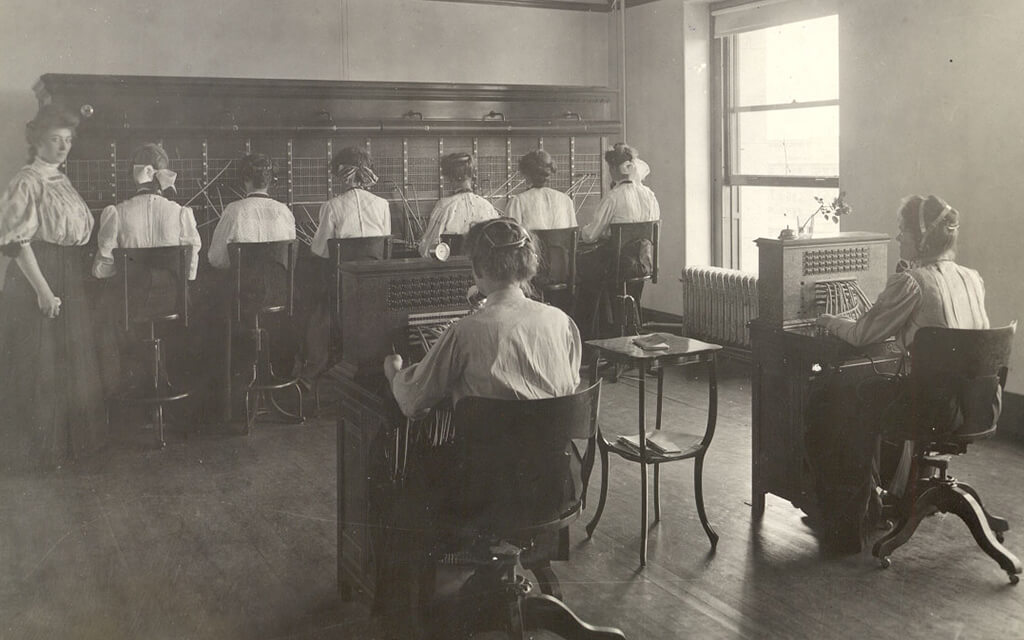 Operators were well trained in switchboard technique and in deportment, before being allowed to work the boards. This group attends switchboard training in Denver. c. 1910
Operators were well trained in switchboard technique and in deportment, before being allowed to work the boards. This group attends switchboard training in Denver. c. 1910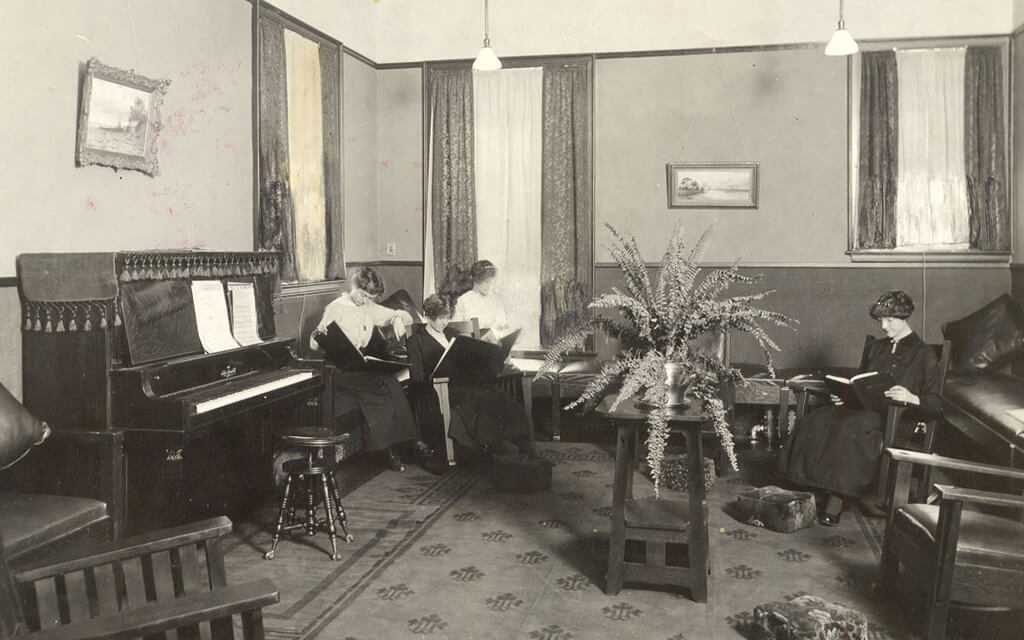 Telephone companies provided “retiring rooms” such as this one in the York exchange in Denver, for operators who felt unwell or needed a break. c. 1910
Telephone companies provided “retiring rooms” such as this one in the York exchange in Denver, for operators who felt unwell or needed a break. c. 1910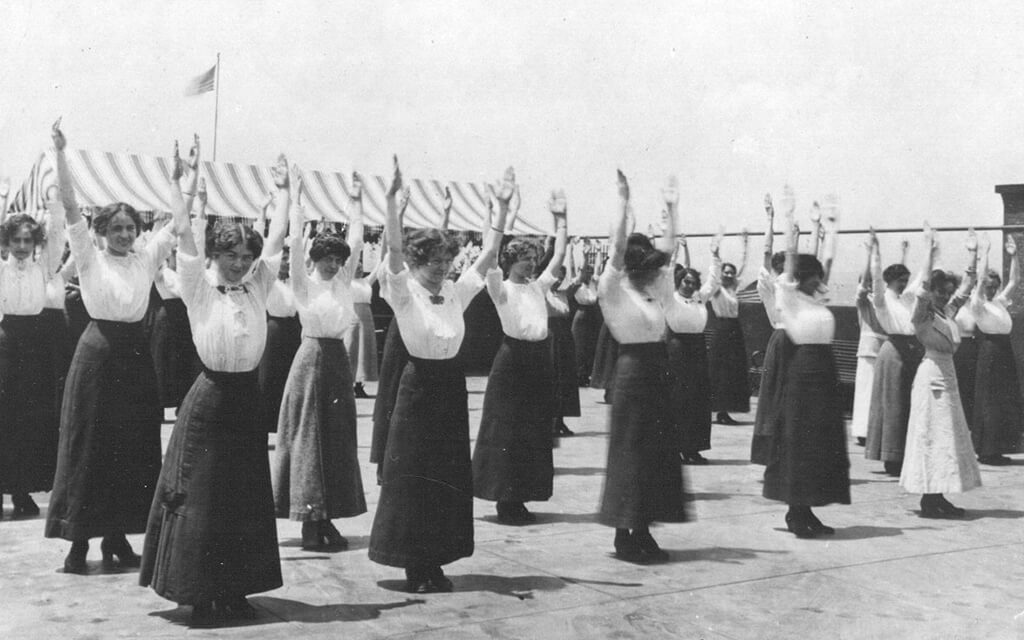 To relieve the tedium of the job, the Colorado Telephone Company required operators to do calisthenics. This is on the roof garden of Denver Main, at 14th and Curtis. c. 1912
To relieve the tedium of the job, the Colorado Telephone Company required operators to do calisthenics. This is on the roof garden of Denver Main, at 14th and Curtis. c. 1912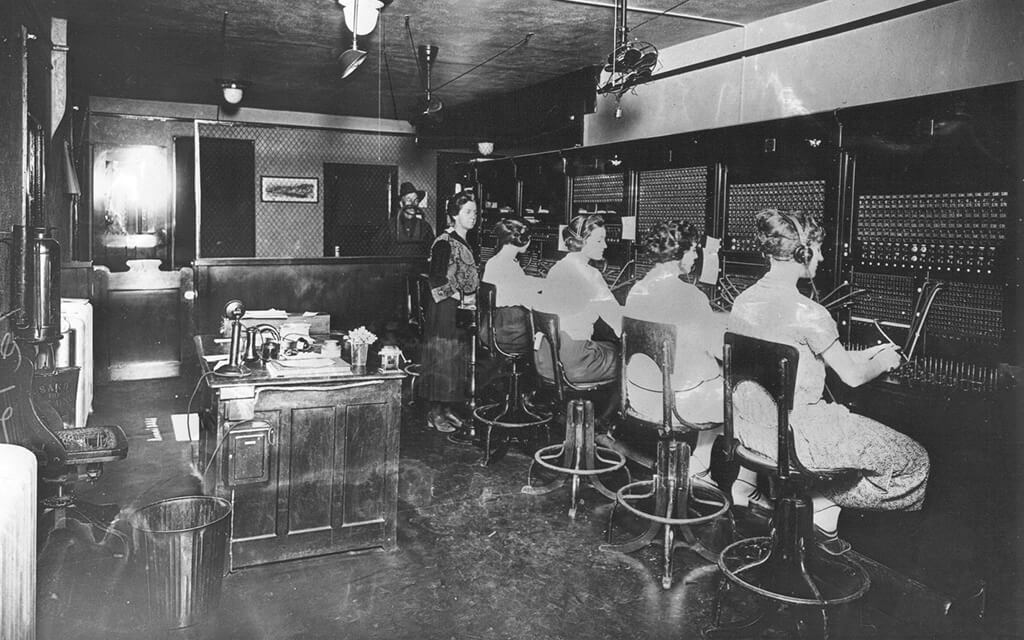 The switchboard in Santa Fe, New Mexico. c. 1921
The switchboard in Santa Fe, New Mexico. c. 1921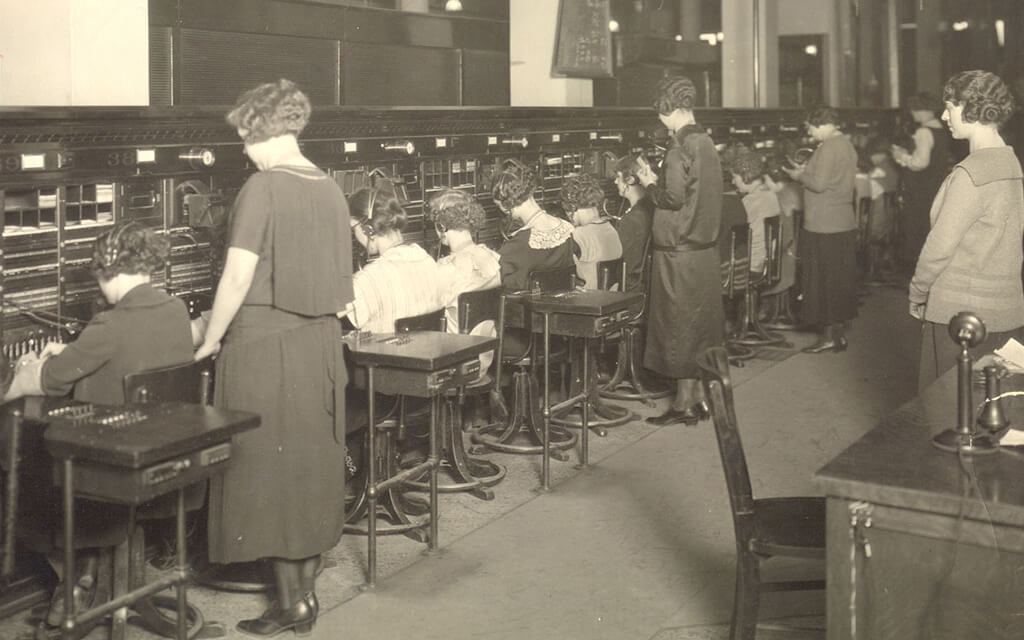 Champa Exchange, Denver, Colorado. c. 1930
Champa Exchange, Denver, Colorado. c. 1930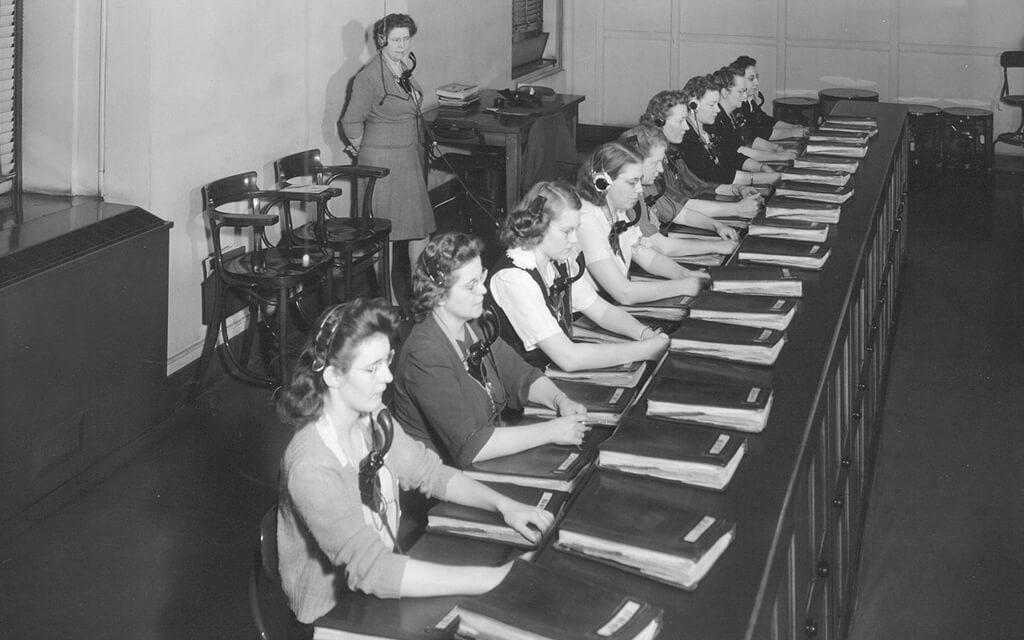 Intercepting operators, Minneapolis, Minnesota. c. 1946
Intercepting operators, Minneapolis, Minnesota. c. 1946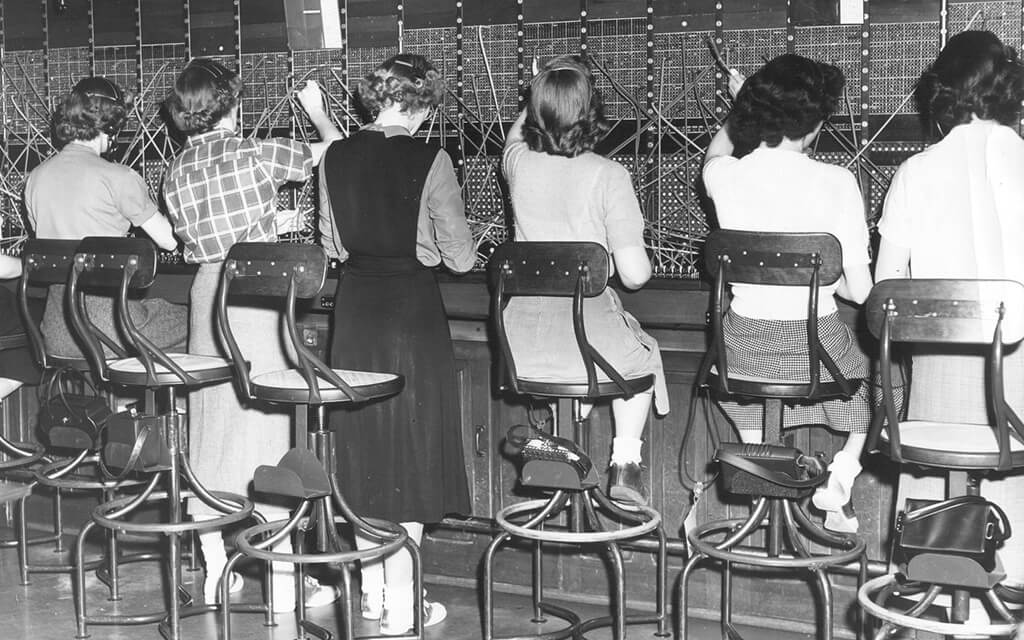 Operators have always been a fashionable lot. Note the bobby sox and saddle shoes. c. 1951
Operators have always been a fashionable lot. Note the bobby sox and saddle shoes. c. 1951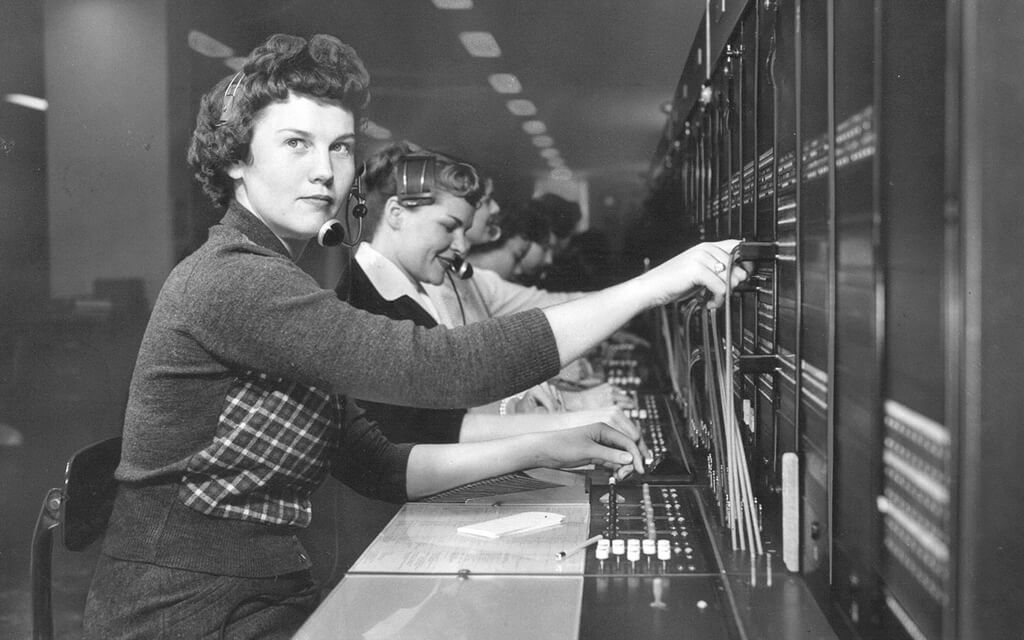 Long Distance operators in Omaha, Nebraska. c. 1959
Long Distance operators in Omaha, Nebraska. c. 1959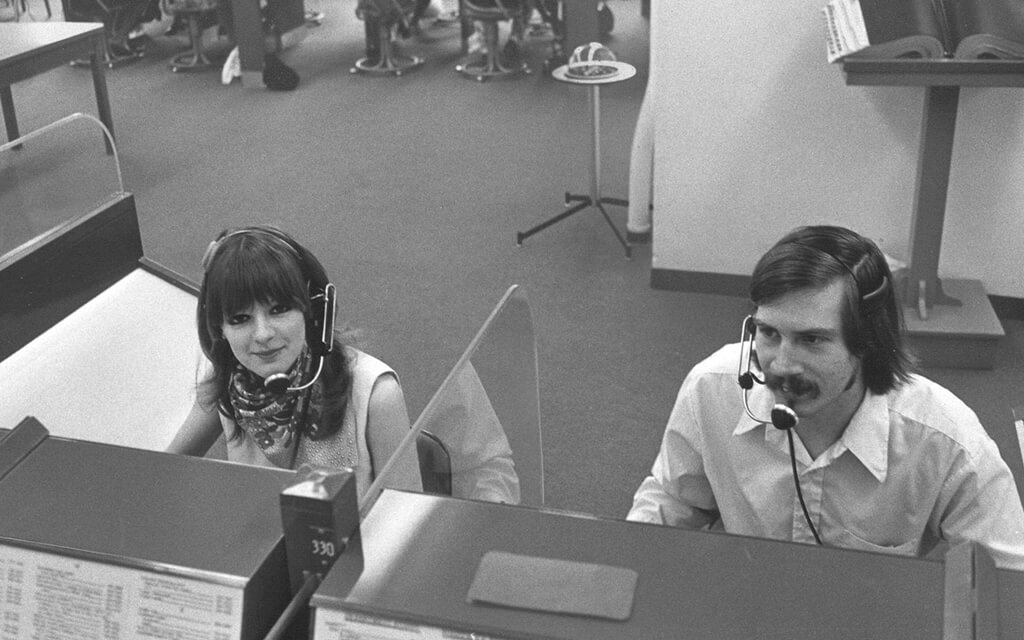 In response to equal rights legislation, telephone companies began hiring for “non-traditional” jobs. This meant that women could become installers and repair technicians, while “boys” could once again be operators. c. 1970
In response to equal rights legislation, telephone companies began hiring for “non-traditional” jobs. This meant that women could become installers and repair technicians, while “boys” could once again be operators. c. 1970

